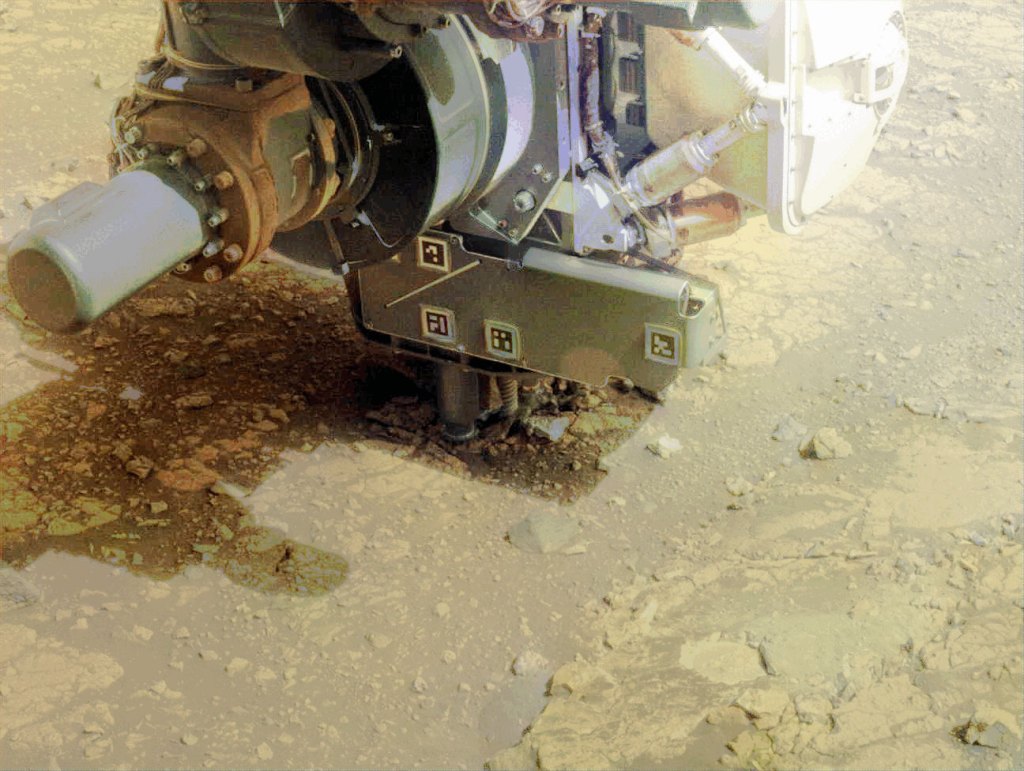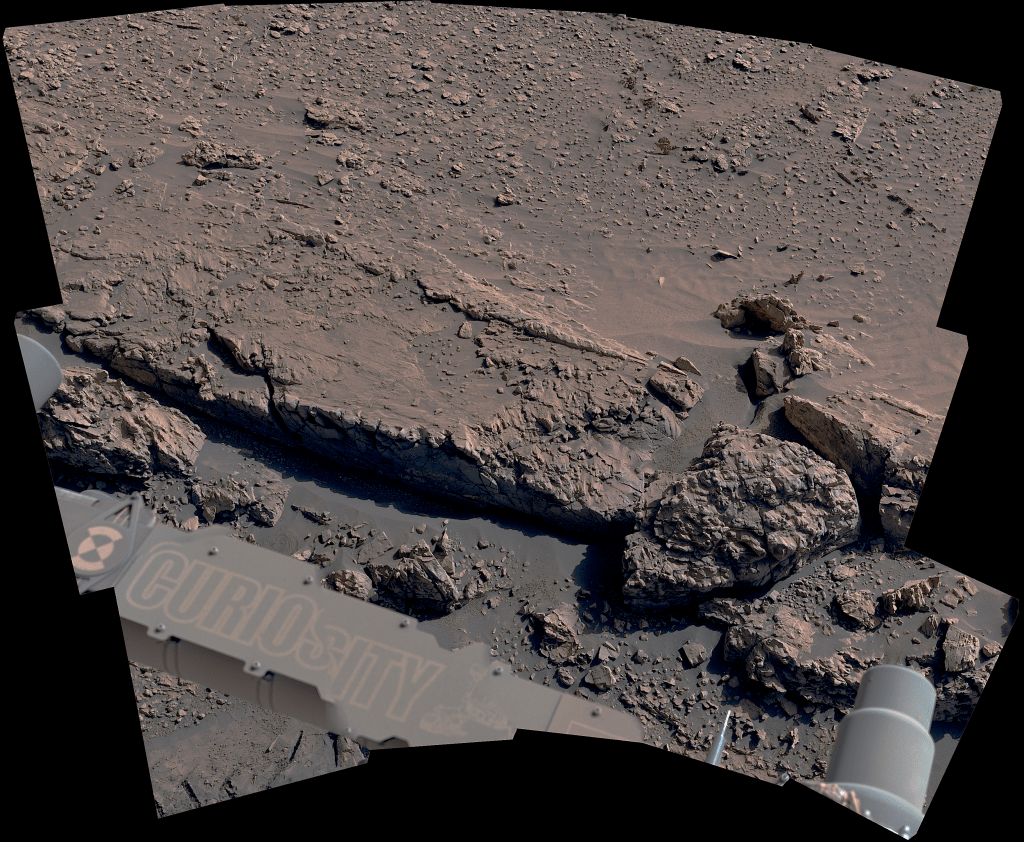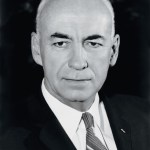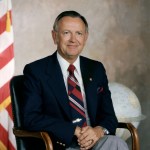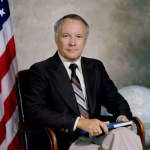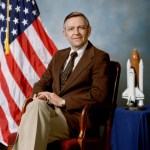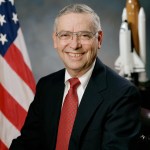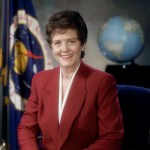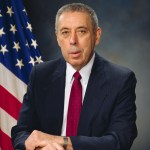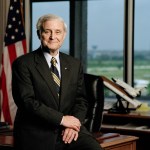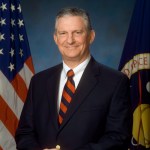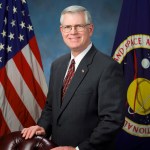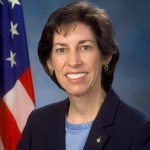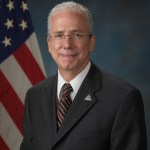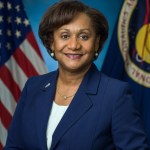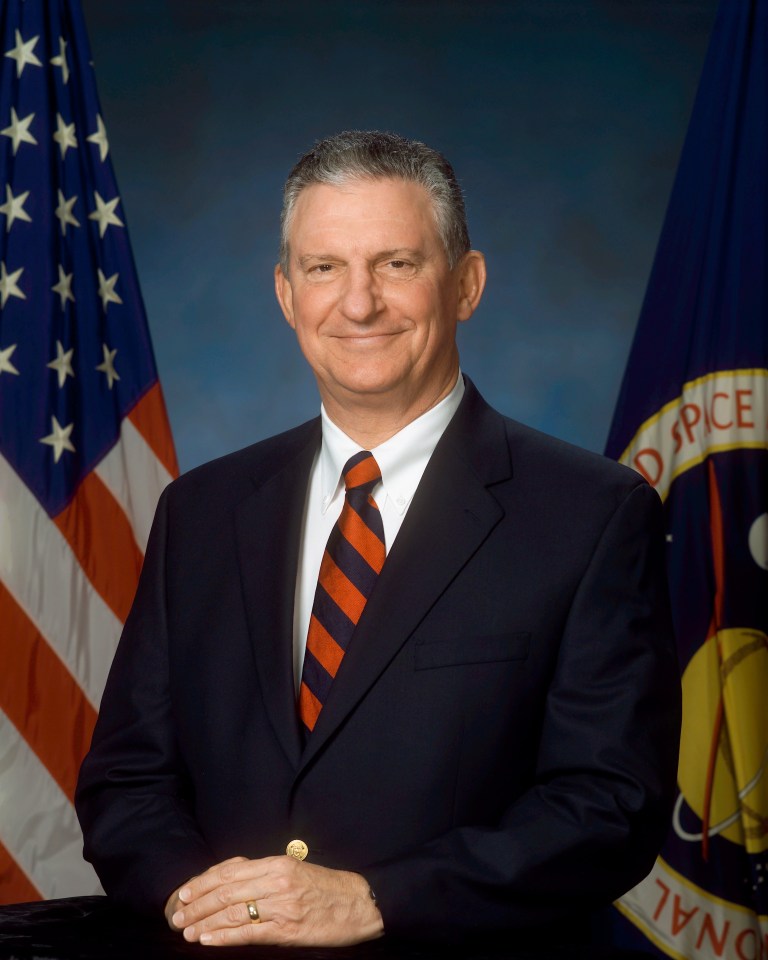
Jefferson D. Howell, Jr.
Johnson Space Center Director, 2002 - 2005
In April 2002, Lieutenant General Jefferson Davis “Beak” Howell became Johnson Space Center’s director, the first and only federal government contractor to have filled this position; all the previous directors had been civil servants. At the time of his appointment, he was a senior vice president for Science Applications International Corp (SAIC) and program manager for the Johnson Safety, Reliability, and Quality Assurance contract supporting the Space Shuttle and International Space Station Programs. While working for SAIC, Howell saw “a lot of flaws” and a lack of “positive leadership” at the center. What he witnessed shaped how he approached his new assignment. Before moving to Houston and taking a position at SAIC in 1999, Howell retired as commander of Marine Forces Pacific in Hawaii, the largest field command in the corps, after 37 years in service.
When Sean O’Keefe became NASA administrator in 2001, Howell expressed an interest in working with him. (They had previously met at Marine Corps Air Station Cherry Point in North Carolina in the early 1990s when President George H. W. Bush named O’Keefe Secretary of the Navy.) Shortly after reaching out to O’Keefe, Howell joined him and other senior NASA leaders for dinner in Houston where they discussed the possibility of Howell becoming center director. A few months later, O’Keefe officially offered Howell the position, and he started on April 1.
Soon after he accepted the role, Howell and other agency leaders worked with the administrator to come up with a new NASA mission, “to understand and protect our home planet, to explore the universe and search for life, to inspire the next generation of explorers as only NASA can,” and vision, “to improve life here, to extend life there, to find life beyond.” Looking back, Howell was proud of both, “I thought it told the whole story of what NASA was about.”

When Howell accepted the director job, NASA was under a strict deadline to complete the International Space Station by 2004. Under his leadership, four space shuttle crews flew to the station, delivering equipment and hardware. Things were so focused that Howell remembered being encouraged to use a screen saver that featured a countdown clock, “so you knew exactly how many hours and minutes till the next shuttle was going up.” He never questioned NASA’s launch fever—he liked the intensity and pressure. Deadlines were a driving force.
On February 1, 2003, Howell was in mission control when the STS-107 crew and their spacecraft, the space shuttle Columbia, was lost. When the families of the fallen crewmembers returned to Houston later that day, he met with them and shared his condolences. From then on, his main task was to look after them, attend the funerals and memorials for their loved ones, keep them informed on the recovery, and brief them as the accident investigation unfolded.

Howell also guided the JSC workforce through the difficult days they faced following the loss of their colleagues. He feared many long-time center employees would retire or resign, but NASA needed their expertise to return to flight. His biggest challenge was to ensure that they remained on the job, so he “became a cheerleader” to keep the team going. He offered his personal assistance and office to employees. “I’ll help you,” he said. “You can lean on me.”
During his tenure, the Columbia Accident Investigation Board released its report and identified flaws within NASA’s culture. Howell had personal experience with the challenges facing NASA contractors, and he wanted to identify and repair the relationship between the civil servants and contractors. He called together program managers and presidents and encouraged them to share their issues and the barriers that they faced. He remembered “it was quite a comeuppance” for the civil servants in attendance. Howell decided to host a retreat in The Woodlands, Texas, where they started to tackle some of these issues and form the Joint Leadership Team. Looking back, he remains proud of the team and their work “to come together to have a better, positive, productive workforce.”
In October 2005, only a few months after the Return to Flight mission of STS-114, commanded by astronaut Eileen M. Collins, NASA announced Howell would be leaving his post at Johnson to take a position at his alma mater, the University of Texas.
Jefferson D. Howell Oral History transcripts











